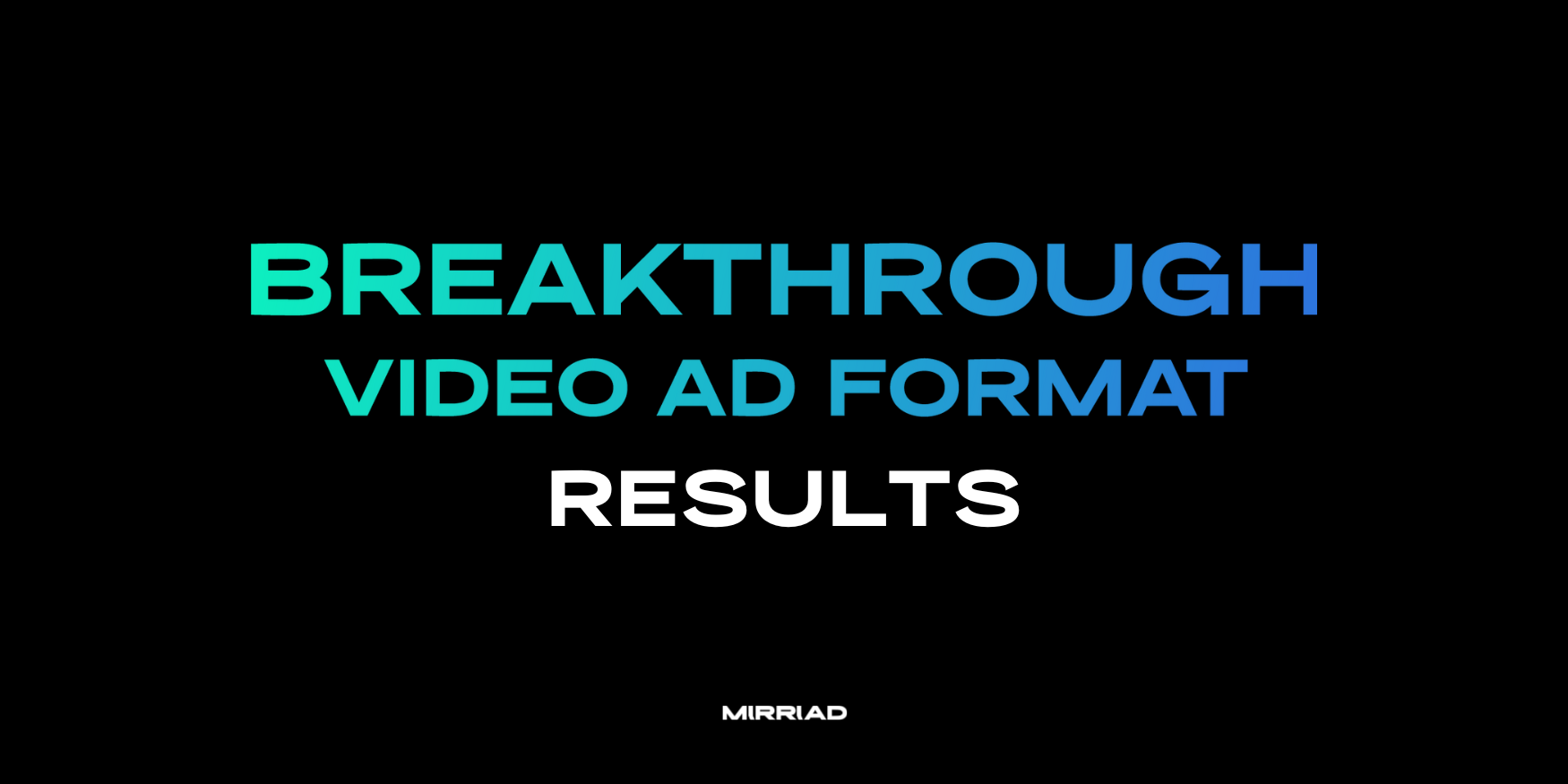The automotive industry has been around since the late 1800s. One of the first-ever car adverts said only “Dispense with a horse” next to an image of a motor carriage and a list of benefits. As technology advanced, automotive advertising became flashier, and cars went from being an exotic luxury to an everyday necessity.
Before long, the ostentatious advertising of the ‘80s and ‘90s transitioned into more intense emotional appeals. Commercials started to feel like short stories, even if they were only a minute long. This transition is a reflection of increasing consumer preference for non-intrusive ad formats. Audiences want an advertising experience that engages them without yanking them from whatever they’re currently immersed in, such as a TV show or movie.
Narrative commercials, although certainly an improvement from loud and jarring ads, are still frequently perceived as disruptive to the overall flow of a consumer’s media experience. In 2024, viewers report that they prefer virtual product placement 10X over traditional ads (Kantar). Studies also show that there is up to a 35% increase in actual purchase of the featured product after exposure.
In the digital age, where streaming content and digital out-of-home formats abound, how is non-intrusive advertising accomplished at scale? Virtual product placement is the answer.
UNDERSTANDING VIRTUAL PRODUCT PLACEMENT
Virtual product placement (VPP) digitally inserts products and brands into video content like TV, streaming, music video, or influencer content during the post-production process. This is done with computer-generated imagery (CGI) to ensure products don't look out of place contextually within the content. One of the biggest advantages of VPP is lightening the "product placement" lift for auto advertisers across every touchpoint - from lowering costs, making logistics easier, allowing in-content campaigns at scale, and tailoring creative to the platform, audience, and contextual moment.
Another amazing benefit of virtual ads is that they allow companies to target audiences they might not have otherwise been able to reach, thanks to access to a broader range of content formats. Even better, virtual product placement doesn’t interrupt the viewer’s media experience, whether they’re watching from their couch or on their phone.
ADVANTAGES OF VIRTUAL PRODUCT PLACEMENT FOR AUTOMOTIVE ADVERTISING
Here are just a few other advantages that virtual product placement offers for automotive companies seeking to advertise their vehicles to a greater variety of audiences.
ENHANCED ENGAGEMENT
Virtual product placement is much more effective at capturing and keeping the audience's attention compared to typical commercials. Instead of interrupting the flow of a gripping story with a commercial break, brands can become part of the scene, naturally catching the viewer’s eye without feeling forced.
It’s also unlikely for viewers to skip or exit out of the media they’re watching when virtual product placement is used. With traditional ads, it’s very easy for a viewer to decide to turn off the TV or swipe out of an app. When advertising is used in the context of media that they’re already a consumer, audiences rate products more favorably.
BROADENING REACH
Virtual ads also play a huge role in increasing overall brand awareness, as they allow companies to enter different cultural contexts relatively seamlessly. Cross-cultural advertising requires a lot of thought and nuance. Common expressions in one culture may be confusing or even wildly inappropriate in other cultures. Instead of coming up with a completely new commercial idea that requires significant time and resources, virtual product placement enables companies to slip effortlessly into a pre-existing situation that the audience already understands.
Lexus is a great example of how VPP can broaden audience reach. They used virtual signage in several music videos across a number of different languages, including “Hauli Hauli,” sung in Punjabi by Indian-Canadian singer Jonita Gandhi, and “Agüita e Coco,” sung in Spanish by Puerto Rican singer Kany Garcia.
Similarly, Nissan used virtual product placement in Hallmark movies and an episode of Freeform’s “Grown-ish” to increase brand awareness for audiences between 18 and 49. In one movie, a Nissan SUV is displayed in the driveway of a character’s home; in another, a couple walks past signage displaying an ad for Nissan’s electric cars.
In “Grown-ish,” a trailer for Nissan’s LEAF can be seen on a bar TV above two characters having a conversation. Nissan’s campaign saw an increase in viewers who said they would be more likely to consider buying a Nissan car after seeing the virtual product placement in both the Hallmark movies and the TV show episode.

CASE STUDY: TOYOTA'S SUCCESS WITH VIRTUAL PRODUCT PLACEMENT
Lexus and Nissan aren’t the only automotive brands seeing success with virtual product placement. Toyota has recently taken advantage of this technology and achieved incredible results, from more purchase consideration to increased ad awareness.
HOW TOYOTA USED VIRTUAL ADS
Toyota partnered with Mirriad for its Grand Highlander campaign, specifically targeting adults who were planning to buy or lease a car in the next six months. Toyota ran the campaign on iTalkBB, the leading provider of Chinese-language entertainment in North America and one of the 40+ publishers in Mirriad’s Diverse Supplier VPP Marketplace. Toyota utilized in-language virtual signage, video within video, and virtual product placement to reach their audience.
THE RESULTS
After running this campaign, Toyota saw impressive results. Ad Awareness increased by 44%, while overall favorability towards Toyota as a brand shot up by 11%. Viewers were 14% more likely to consider purchasing a Grand Highlander after seeing content with virtual product placement, and 40% more likely to report feeling connected to Toyota’s message.
STRATEGIC IMPLEMENTATION OF VPP IN AUTO MARKETING
How can you harness virtual product placement to get results like Toyota’s? Here are a few best practices to keep in mind as you consider incorporating virtual ads into your marketing strategy.
TARGET STRATEGICALLY
Although VPP makes it easy for you to place your product anywhere, anytime, that doesn’t always mean that your product will make sense in every situation. For example, placing a sleek electric car in a sci-fi film targets a different audience than placing a rugged SUV in a high-stakes TV drama. Think about who you want to reach when looking into the situations that you want your products to appear in.
CONTEXTUAL IS KEY
Don’t forget that the scene or environment you place your product in can have a powerful emotional connection to the audience, making it more likely for them to create strong associations with your brand. One study discovered that a billboard ad for a Jeep Wrangler placed in a suspenseful hostage scene prompted a 6% increase in perceived product value as a result of viewer “anticipation.”
TAKE ADVANTAGE OF MULTIPLE PLATFORMS
When using virtual product placement as part of your advertising strategy, don’t just focus on one platform. The appeal of virtual ads is that they aren’t limited by the physical world — they can appear in anything from television and advertising-based video on demand (AVOD) to connected TV (CTV) and subscription video on demand (SVOD). Use multiple platforms to ensure your message is heard.
ACHIEVING POWERFUL RESULTS WITH VIRTUAL PRODUCT PLACEMENT
Virtual product placement is the future of automotive advertising. It captures your audience’s attention without the negative associations of traditional commercials, while simultaneously increasing overall brand awareness and purchase consideration after exposure. It allows brands to reach audiences they might not have been able to otherwise, overcoming language barriers and cultural differences. Most importantly, it fosters an emotional connection between brands and potential buyers, increasing the likelihood of acquisition.
To learn more about the powerful results that virtual ads can deliver, explore our Toyota case study here. If you'd like to learn more about Mirriad's industry-leading virtual product placement solution, take a look at our Auto Advertiser page.
This article was written by Emily Oberkrieser, Mirriad's Director of Integrated Marketing. Follow us on LinkedIn here.



.png)